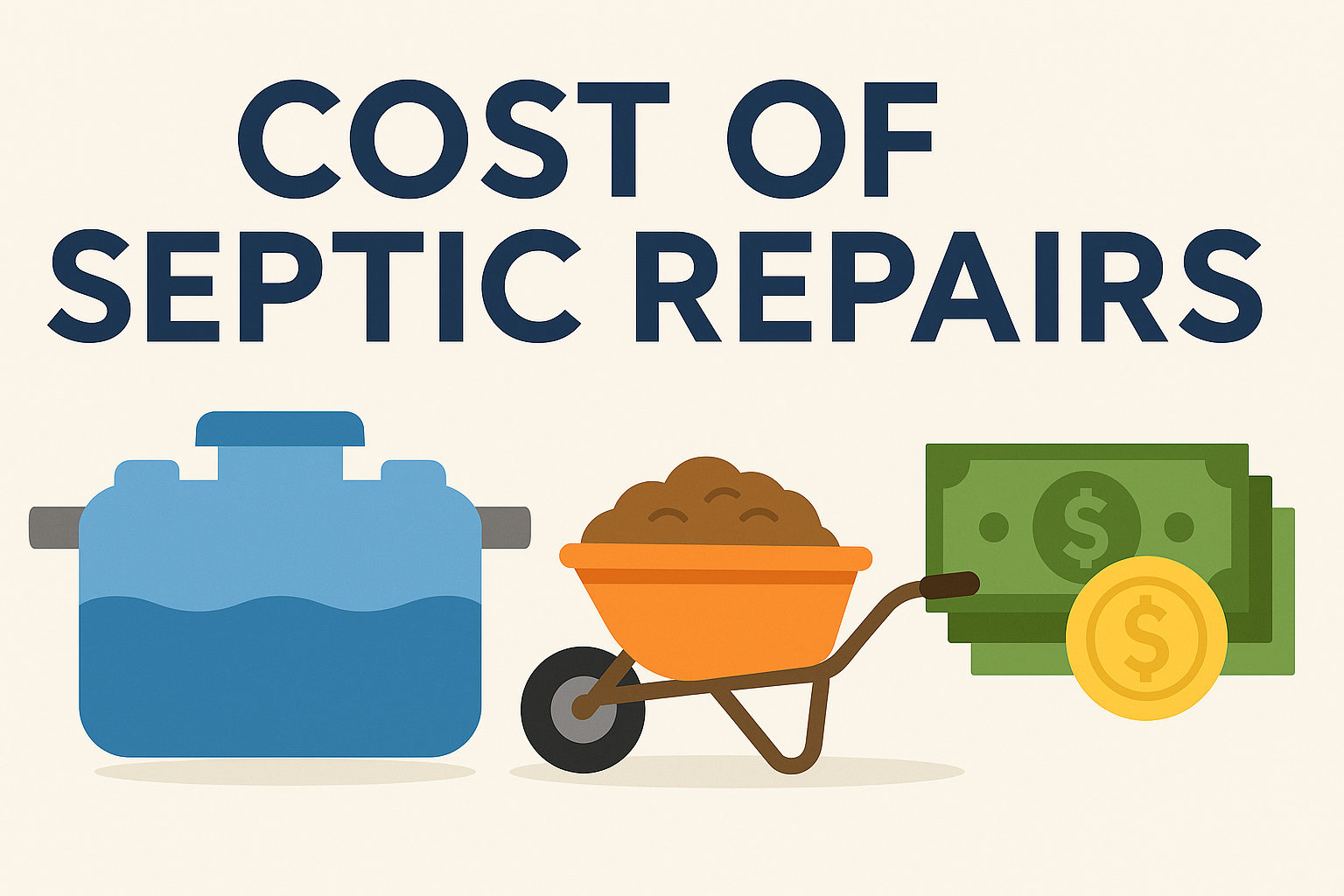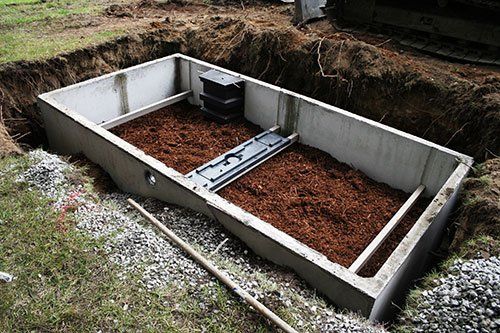💩 What Is a Septic Tank, Anyway?
In plain English, a septic tank is an underground container where all the wastewater from your home (toilets, sinks, showers, laundry) goes if you’re not connected to a city sewer system.
It separates solids from liquids, breaks stuff down with bacteria, and sends cleaner water out to a drain field where it gets absorbed into the ground.
It’s like your home’s private little wastewater treatment plant. And like any hardworking system, it needs proper maintenance—or it can go haywire fast.
🚩 Signs Your Septic System Might Be Waving a Red Flag
1. Water or Sewage Backing Up Inside Your Home if you flush and it burps black gunk into your tub?
Yeah. That’s a sign.
Possible cause: Your septic tank is too full, or the pipes are clogged.
“After a huge rainstorm, my basement smelled like a swamp,” says Tony from Michigan. “Turns out, our tank was overloaded, and the drain field wasn’t draining. It cost us thousands.”
2. Extra-Green, Spongy Grass Around the Septic Tank
Green grass is nice, but if that area is unusually lush—or smells funky—it might mean wastewater is leaking out where it shouldn’t.
Pro tip: Dying grass over the tank? Normal. That area tends to be dry. But extra-green? Not good.
3. Gurgling Sounds in Your Plumbing
That glug-glug sound in the sink after flushing? It’s not cute.
It could be air-trapped due to blockages. It’s your septic system trying to talk to you—don’t ignore it.
4. Slow Drains
If every sink in your house is sluggish, it could be a system-wide issue, not just a hair clog in your bathroom drain.
5. Standing Water or Damp Spots in the Yard
Especially around the tank or drainfield. This could mean your tank is full or leaking. Combine this with any smell, and it’s time to call in the pros.

🛠 How to Baby Your Septic Tank (Without Going Overboard)
1. Know Where Your Septic Tank Is
Seriously. Find out where it lives.
“After living in our house for five years, I had no idea where the tank was until it backed up,” says Lindsay in North Carolina. “Now I have a map and everything.”
“locating your septic tank at home
2. Pump It Regularly (Don’t Skip This One)
Every 3 to 5 years, you need to pump your tank to remove solid sludge that bacteria can’t break down. Keep records. Your future self (or the next homeowner) will thank you.
“We skipped one cycle, and our entire drain field failed,” says Jacob, a homeowner in rural Oregon. “$10K down the drain—literally.”
📌 Low competition keyword: how often to pump septic tank
3. Be Kind to Your Pipes
Your toilet isn’t a trash can. Repeat that.
🚫 Don’t flush:
- Wipes (even if they say “flushable”)
- Feminine hygiene products
- Paper towels
- Dental floss
- Grease or oil
📌 Low competition keyword: what not to flush in septic systems
4. Spread Out Water Usage
Doing five loads of laundry back-to-back? That’s a septic system nightmare.
Instead, spread out high-water-usage activities over the week. Think of your septic system like a sponge—it needs time to soak and release before you drench it again.
5. Go Easy on the Chemicals
Harsh drain cleaners, bleach, and anti-bacterial soaps can mess with the helpful bacteria in your tank. Use septic-safe cleaners and avoid pouring chemicals down the drain.
6. Watch the Yard
No parking or heavy equipment over the tank or drain field. Also, don’t plant trees too close. Their roots love water—and they’ll bust into your pipes to find it.
📌 Low competition keyword: septic drain field landscaping tips
7. Schedule Inspections
Even if everything seems fine, it’s smart to have a professional inspect your system every few years. They can spot things like slow leaks, cracks, or early signs of drain field trouble.
✅ Quick Septic Tank Maintenance Checklist
- ✅ Locate your tank and drain field
- ✅ Pump it every 3–5 years
- ✅ Don’t flush or pour junk down the drain
- ✅ Spread out laundry and dishwashing
- ✅ Use septic-safe cleaners
- ✅ Avoid heavy traffic over the tank
- ✅ Get regular inspections
🧡 Final Thoughts: Love Your Septic, Live in Peace
Treat your septic system like it’s part of the family—because when it fails, everyone suffers. A little TLC goes a long way in saving money, stress and keeping your house running smoothly.
Remember: Baby your septic tank, or it’ll throw a tantrum you won’t forget.
Need help or not sure when your tank was last pumped? Call your local septic service provider and get on a maintenance schedule. Your nose, your wallet, and your weekend plans will thank you.



